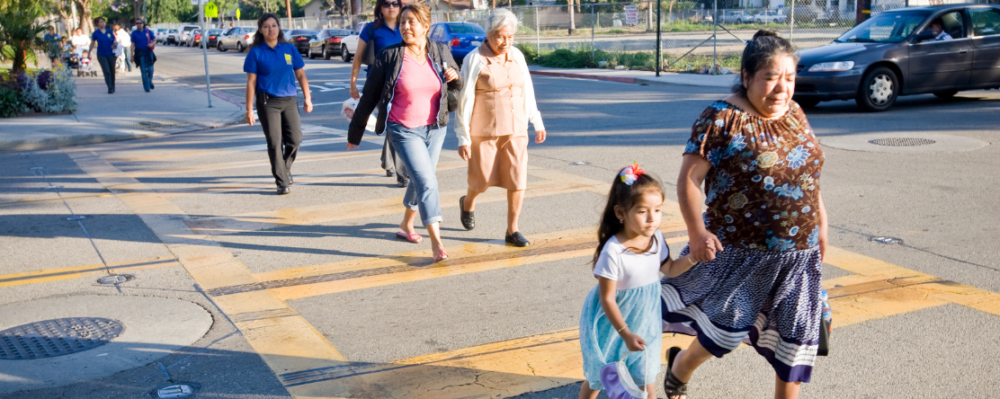
Prevention Means Business
- Public Health Institute, American Public Health Association, [design by Elefint Design]

Skyrocketing health care costs and escalating chronic disease rates place a huge economic burden on America’s business owners—yet 75% of America’s health care costs come from diseases that are preventable. Health matters in the workplace: A healthier workforce brings higher productivity, fewer work days missed and lower health insurance costs.
Creating a healthier workplace makes a difference, but healthy people live in healthy communities—and businesses flourish when they help build healthier communities, too. Prevention Means Business, a new infographic and brief produced by the Public Health Institute in partnership with the American Public Health Association, graphically illustrate the connection between healthy places and thriving businesses.
Resources for businesses
- The ACA increases health insurance premium discounts an employer can extend to participating employees from 20 percent to 30 percent by 2014, and as high as 50 percent under certain circumstances. [http://www.gpo.gov/fdsys/pkg/PLAW-111publ148/pdf/PLAW-111publ148.pdf]
- The ACA’s Prevention and Public Health Fund authorizes $200 million in grants through 2015 to help small employers (fewer than 100 employees) implement wellness programs.
- The Prevention and Public Health Fund also creates healthier communities by increasing access to healthy food, physical activity and smoke-free places.
Infographic References
Poor Health is Bad Business
Finkelstein, E. A., DiBonaventura, Md., Burgess, S. M., Hale, B.C. (2010). The costs of obesity in the workplace. Journal of Occupational and Environmental Medicine, 52(10), 971-6. doi: 10.1097/JOM.0b013e3181f274d2
Trust for America’s Health. (2008). F as in fat: How obesity policies are failing in America. Washington, DC: Levi, J., Vinter, S., St. Laurent, R., & Segal, L. M. Retreived from http://www.rwjf.org/content/dam/farm/reports/reports/2008/rwjf30822
Summit Health. (2008). Wellness at work: Proving the value of health [White Paper]. Retrieved from http://learnwageworks.com/Webinars/Wellness_at_Work/WW-1256-Wellness-WhitePaper_091108v2.pdf
Prevention Pays at Work
Baicker, K., Cutler, D. & Song, Z. (2010). Workplace wellness programs can generate savings. Health Affairs 29(2), 304-311. doi: 10.1377/hlthaff.2009.0626
Weldon, W. (2011, January). Fix the Health Care Crisis One Employee at a Time. Harvard Business Review. Retrieved from http://hbr.org/2011/01/web-exclusive-fix-the-health-care-crisis-one-employee-at-a-time/ar/1
Henke, R.M., Carls, G.S., Short, M.E., Pei, X., Wang, S., Moley, S., Sullivan, M., & Goetzel, R.Z. (2010). The relationship between health risks and health and productivity costs among employees at Pepsi Bottling Group. Journal of Occupational & Environmental Medicine, 52(5), 519–527. doi: 10.1097/JOM.0b013e3181dce655
Chapman, L. S. (2003). Meta-evaluation of worksite health promotion economic return studies. The Art of Health Promotion, 6(6), 1-16. Retrieved from http://dorncompanies.com/work_site_health_promotion_Evaluation.pdf
Chapman, L. S. (2012) Meta-evaluation of worksite health promotion economic return studies: 2012 update. The Art of Health Promotion, 26(4), TAHP1-TAHP-12. doi: 10.4278/ajhp.26.4.tahp
Healthy Communities=Healthy Businesses
Iowa Bicycle Coalition. (2011). Economic and Health Benefits of Bicycling in Iowa. Retrieved from http://www.peoplepoweredmovement.org/site/images/uploads/Economic_and_Health_Benefits_of_Bicycling_in_Iowa.pdf
Moolgavkar, S. H., Holford, T. R., Levy, D. T., Kong, C. Y., Foy, M., Clarke, L., …, Feuer, E. J. (2012). Impact of the reduction in tobacco smoking on lung cancer mortality in the U.S. over the period 1975-2000, Journal of the National Cancer Institute, 104(7), 541-8. doi: 10.1093/jnci/djs136.
McCann, B., Meyer, A., Woods, J., & Morfas, C. (2012). It’s a safe decision: Complete streets in California. Retrieved from http://www.completestreets.org/webdocs/resources/cs-in-california.pdf
Wisdom, J., Downs, J. S., & Loewenstein, G. (2010). Promoting healthy choices: Information versus convenience. American Economic Journal: Applied Economics, 2(2), 164-178. Retrieved from http://www.cmu.edu/dietrich/sds/docs/loewenstein/PromotingHealthyChoice.pdf
Walt Disney Company. (2008). Walt Disney Company—2008 Corporate Responsibility Report. Retrieved from http://Disney.go.com/crreport/childrenandfamily/positivedevelopment/kidshealthandnutrition.html/
Wootan, M. G. (2012). Children’s meals in restaurants: families need more help to make healthy choices. Childhood Obesity (Formerly Obesity and Weight Management), 8(1), 31-33. doi:10.1089/chi.2011.0111
Work With Us
You change the world. We do the rest. Explore fiscal sponsorship at PHI.
Support Us
Together, we can accelerate our response to public health’s most critical issues.
Find Employment
Begin your career at the Public Health Institute.



